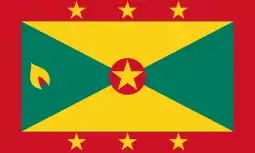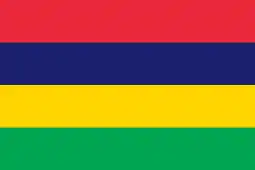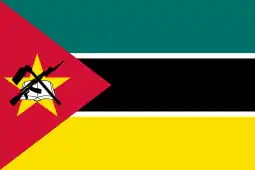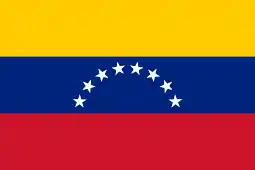Winchester Model 1912
The Winchester Model 1912 (also commonly known as the Model 12, or M12) is an internal-hammer pump-action shotgun with an external tube magazine. Popularly named the Perfect Repeater at its introduction, it largely set the standard for pump action shotguns over its 51-year high-rate production life. From August 1912 until first discontinued by Winchester in May 1964, nearly two million Model 12 shotguns were produced in various grades and barrel lengths. Initially chambered for 20 gauge only, the 12 and 16 gauge versions came out in 1913 (first listed in the 1914 catalogs), and the 28 gauge version came out in 1934. A .410 version was never produced; instead, a scaled-down version of the Model 12 known as the Model 42, directly derived from scaled drawings of the Model 12, was produced in .410.
| Winchester Model 1912 shotgun | |
|---|---|
 Winchester Model 12 12-gauge pump-action shotgun manufactured in 1948 | |
| Type | Shotgun |
| Place of origin | United States |
| Service history | |
| In service | 1912-Present |
| Used by | United States Army United States Navy United States Marine Corps |
| Wars | World War I World War II Korean War Vietnam War |
| Production history | |
| Designer | T.C. Johnson John M. Browning |
| Manufacturer | Winchester Repeating Arms Company |
| Produced | 1912–1964, with special production runs until 2006 |
| No. built | nearly 2,000,000 |
| Variants | See text |
| Specifications | |
| Caliber | 12 gauge, 16 gauge, 20 gauge, 28 gauge |
| Action | Pump-action |
| Feed system | 6-round tubular magazine (see text for more details) |
Description
The Model 1912 (shortened to Model 12 in 1919) was the next step from the Winchester Model 1897 hammer-fired shotgun, which in turn had evolved from the earlier Winchester Model 1893 shotgun. The Model 12 was designed by Winchester engineer T.C. Johnson, and was based in part on the M1893/97 design by John M. Browning, in that it used a sliding forearm or "pump action" to cycle the mechanism. It was initially available in 20 gauge only (12 and 16 gauge guns were not sold until late 1913). The Model 12 was a very successful internal hammer pump-action shotgun.
Its tubular magazine was loaded through the bottom of the gun. Empty shotgun shells ejected to the right. Depending on the particular wooden plug installed in the magazine, two, three, or four shells could be loaded into the tubular magazine. The magazine holds six 2¾-inch 12 ga. shells, when no plug is installed, unlike most shotguns of today which hold four or five shells.
With forged and machined steel parts, the ultimate reason for discontinuation in 1964 was that it was too expensive to produce at a competitive price. The primary competition at this time came from the much less expensive Remington Model 870, which had been introduced in 1950. The majority of "modern" Model 12 shotguns manufactured after 1927 were chambered for 2¾-inch shotgun shells only, although some specialized models such as the Heavy Duck Gun Model 12 were chambered for 3" Super Speed and Super X shells (basically a 3" magnum). The early 20 gauge Model 12 guns had chambers that were 2½", and the 16 gauge Model 12s were chambered for a 2 9/16-inch shotgun shell. To add further confusion, some of these early Model 12s have subsequently been modified, with their chambers lengthened to accept 2¾-inch shotgun shells, while others remain in their factory-stock chamber lengths. Careful inspection by a gunsmith is always recommended to determine whether or not it is safe to fire a modern 2¾-inch shotgun shell in older Model 12s.
Special production examples were produced by Winchester, the U.S. Repeating Arms Company, and Miroku after 1964 through 2006 through specialized gun collector purchase programs, but the Perfect Repeater shotgun was never mass-produced after 1964. The U.S. Repeating Arms Company (a subsidiary of FN) announced a complete closing of the New Haven, Connecticut factory facility in January 2006, thus ending the Model 12's long and illustrious career at the age of 95 years.
Military use
The United States armed forces used various versions of the Model 12 in World War I, World War II, Korea, and in the early part of the Vietnam War, until inventory was exhausted after the Model 12's initial production ceased in 1964. Versions of the Model 12 were type classified as the Model 12 or M12 for short. Approximately 20,000 Model 12 trench guns were purchased by the US Army in World War I, differing from the civilian version by having a shorter barrel, a perforated steel heat shield, and a M1917 bayonet adapter.

More than 80,000 Model 12 shotguns were purchased during World War II by the United States Marine Corps, Army Air Forces, and Navy, mostly for use in the Pacific theater. Riot gun versions of the Model 12, lacking the heat shield and bayonet, were purchased by the Army for use in defending bases and in protecting Air Forces aircraft against saboteurs when parked. The Navy similarly purchased and used the riot gun version for protecting Navy ships and personnel while in foreign ports. The Marine Corps used the trench gun version of the Model 12 to great success in taking Japanese-occupied islands in the Pacific. The primary difference in Model 12 shotguns between the World War II trench gun version versus the World War I trench gun version was that the original design, containing six rows of holes in the perforated heat shield, was reduced to only four rows during 1942.
During the Korean War, the Marines used the Model 12 extensively. Likewise, the Marines and U.S. Army used the Model 12 during the Vietnam War. However, production of the Model 12 ended in 1964, which led to the Model 12 no longer being purchased by the military. However, there were numerous firearms already in the American arsenal, and the Model 12 would continue to see combat service until the end of the 1960s. During the middle 1960s, the Ithaca 37 shotgun was acquired for combat use, and it began replacing the Model 12 as the primary shotgun employed by the United States military. The Ithaca 37 eventually became the most commonly-used shotgun of the Vietnam War. Other shotguns which were used in that conflict included the Winchester Model 1897 trench gun, the Stevens Model 77 shotgun, and the Remington 870 Wingmaster, the latter of which was used more by the U.S. Navy than other branches.
Unlike most modern pump-action shotguns, the Winchester Model 12 had no trigger disconnector. Like the earlier Model 1897, it fired each time the action closed as long as the trigger remained depressed from the prior shot. While the trigger remained depressed, as fast as one could pump the action open and closed another round would fire ("slam firing"). That capability and its 6-shell magazine capacity made it effective for close-combat.
Users
 Afghanistan[1]
Afghanistan[1] Albania
Albania Algeria[2]
Algeria[2] Andorra[3]
Andorra[3] Angola[4]
Angola[4] Antigua and Barbuda[5]
Antigua and Barbuda[5] Argentina[6]
Argentina[6] Armenia[7]
Armenia[7].svg.png.webp) Australia[8]
Australia[8] Austria[9]
Austria[9] Azerbaijan[10]
Azerbaijan[10] Bahamas[11]
Bahamas[11] Bahrain[12]
Bahrain[12] Bangladesh
Bangladesh Barbados[13]
Barbados[13] Belarus[14]
Belarus[14].svg.png.webp) Belgium[15]
Belgium[15] Belize[16]
Belize[16] Benin[17]
Benin[17] Bermuda
Bermuda Bolivia[4]
Bolivia[4] Bosnia and Herzegovina[18]
Bosnia and Herzegovina[18] Botswana[19]
Botswana[19] Brazil[20]
Brazil[20] Brunei
Brunei Bulgaria[21]
Bulgaria[21] Burkina Faso[22]
Burkina Faso[22] Burundi
Burundi Cambodia[23]
Cambodia[23] Cameroon[24]
Cameroon[24].svg.png.webp) Canada[25]
Canada[25] Cape Verde
Cape Verde Central African Republic[26]
Central African Republic[26] Chad[27]
Chad[27] Chile[2]
Chile[2] Colombia[8]
Colombia[8] Comoros[28]
Comoros[28] Costa Rica[29]
Costa Rica[29] Côte d'Ivoire[30]
Côte d'Ivoire[30] Croatia[24]
Croatia[24] Cuba[31]
Cuba[31] Cyprus[32]
Cyprus[32] Czech Republic[33]
Czech Republic[33] Democratic Republic of Congo[34]
Democratic Republic of Congo[34] Denmark[35]
Denmark[35] Djibouti
Djibouti Dominican Republic[36]
Dominican Republic[36] East Timor[37]
East Timor[37] Ecuador[38]
Ecuador[38] Egypt[4]
Egypt[4] El Salvador[3]
El Salvador[3] Equatorial Guinea[39]
Equatorial Guinea[39] Eritrea[12]
Eritrea[12] Estonia[32]
Estonia[32] Ethiopia[30]
Ethiopia[30] Fiji[40]
Fiji[40] Finland[41]
Finland[41] France[8]
France[8] Gabon[4]
Gabon[4] Gambia[10]
Gambia[10] Georgia
Georgia Ghana[42]
Ghana[42] Greece[43]
Greece[43] Grenada[24]
Grenada[24] Guatemala[8]
Guatemala[8] Guinea[11]
Guinea[11] Guinea-Bissau[44]
Guinea-Bissau[44] Guyana[21]
Guyana[21] Haiti[19]
Haiti[19] Honduras[45]
Honduras[45] Hong Kong
Hong Kong Hungary[46]
Hungary[46] Iceland[47]
Iceland[47] India[4]
India[4] Indonesia
Indonesia Iraq[48]
Iraq[48] Ireland[49]
Ireland[49] Israel[50]
Israel[50] Italy[17]
Italy[17] Jamaica[38]
Jamaica[38] Japan[4]
Japan[4] Jordan[51]
Jordan[51] Kazakhstan
Kazakhstan Kenya[3]
Kenya[3] Kosovo[11]
Kosovo[11] Kyrgyzstan[24]
Kyrgyzstan[24] Laos[52]
Laos[52] Latvia[53]
Latvia[53] Lesotho[8]
Lesotho[8] Liberia[33]
Liberia[33] Libya[4]
Libya[4] Liechtenstein
Liechtenstein Lithuania[54]
Lithuania[54] Macedonia[7]
Macedonia[7] Madagascar[8]
Madagascar[8] Malaysia[55]
Malaysia[55] Malawi
Malawi Maldives[31]
Maldives[31] Mali[56]
Mali[56] Malta[25]
Malta[25] Mauritania[3]
Mauritania[3] Mauritius
Mauritius Mexico[57]
Mexico[57] Micronesia[14]
Micronesia[14] Moldova[58]
Moldova[58] Monaco[38]
Monaco[38] Mongolia[59]
Mongolia[59] Montenegro[40]
Montenegro[40] Morocco[4]
Morocco[4] Mozambique[25]
Mozambique[25] Myanmar[60]
Myanmar[60] Namibia[12]
Namibia[12] Nepal[8]
Nepal[8] New Zealand[61]
New Zealand[61] Nicaragua[36]
Nicaragua[36] Nigeria[7]
Nigeria[7] Niger[62]
Niger[62] North Korea[63]
North Korea[63] Norway[64]
Norway[64] Oman[4]
Oman[4] Pakistan[27]
Pakistan[27] Panama[3]
Panama[3] Papua New Guinea
Papua New Guinea Paraguay[6]
Paraguay[6] People's Republic of China[65]
People's Republic of China[65] Peru[66]
Peru[66] Philippines[32]
Philippines[32] Poland[67]
Poland[67] Portugal[33]
Portugal[33] Qatar
Qatar Republic of Congo[68]
Republic of Congo[68] Romania[4]
Romania[4] Rwanda
Rwanda Samoa[11]
Samoa[11] San Marino[2]
San Marino[2] São Tomé and Príncipe[4]
São Tomé and Príncipe[4] Saudi Arabia[3]
Saudi Arabia[3] Senegal[69]
Senegal[69] Serbia[27]
Serbia[27] Seychelles[58]
Seychelles[58] Sierra Leone[8]
Sierra Leone[8] Singapore
Singapore Slovakia[25]
Slovakia[25] Slovenia[7]
Slovenia[7] Somalia[70]
Somalia[70] South Africa[8]
South Africa[8] South Korea[71]
South Korea[71] South Sudan[5]
South Sudan[5] Spain[10]
Spain[10] Sri Lanka[2]
Sri Lanka[2] Sudan[15]
Sudan[15] Suriname
Suriname Syria[72]
Syria[72] Swaziland[73]
Swaziland[73] Sweden[74]
Sweden[74] Taiwan[75]
Taiwan[75] Tajikistan[30]
Tajikistan[30] Tanzania[25]
Tanzania[25] Thailand[4]
Thailand[4] Togo[5]
Togo[5] Tonga[76]
Tonga[76] Trinidad and Tobago[58]
Trinidad and Tobago[58] Tunisia[2]
Tunisia[2] Turkey[77]
Turkey[77] Tuvalu[12]
Tuvalu[12] Uganda[4]
Uganda[4] Ukraine[19]
Ukraine[19] United Arab Emirates[18]
United Arab Emirates[18] United Kingdom[78]
United Kingdom[78] United States[79]
United States[79] Uruguay[1]
Uruguay[1] Vatican City[80]
Vatican City[80] Venezuela[4]
Venezuela[4] Vietnam[81]
Vietnam[81] Yemen[72]
Yemen[72] Zaire
Zaire Zambia[7]
Zambia[7] Zimbabwe[8]
Zimbabwe[8]
References
- Fawcett, Bill. Hunters & Shooters: An Oral History of the U.S. Navy SEALS in Vietnam. NY: Avon Books, 1995. ISBN 0-380-72166-X, pp. 79–80, especially.
- "Give Us More Shotguns!" by Bruce N. Canfield, American Rifleman, May 2004
- "Sequence of Take-down and Assembly Operations Model 12 Slide Action Repeating Shotgun", A. A. Arnold, Olin, Winchester-Western Division, New Haven, CT, October 1957
